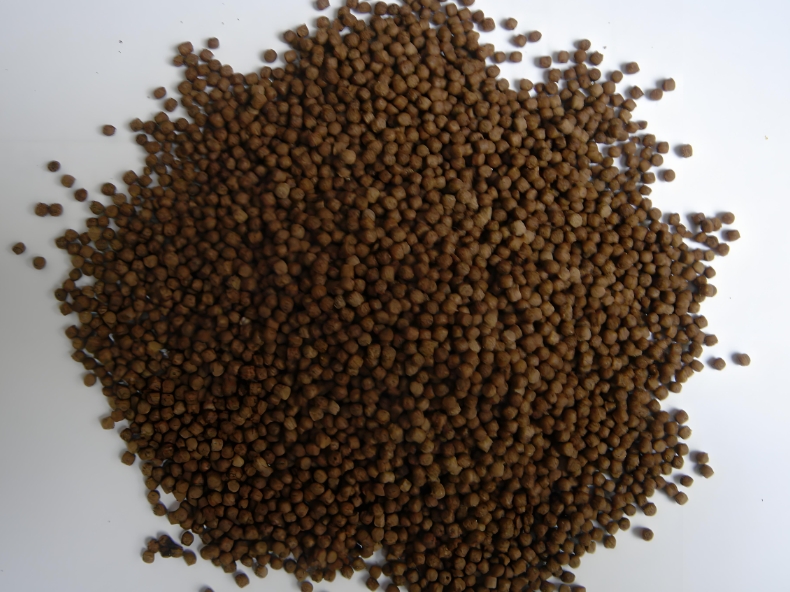Mangime per pesci di qualità superiore: Guida alle tecniche di lavorazione avanzate
The production of high-quality fish food is a precise science, blending advanced nutritional knowledge with sophisticated manufacturing technology. Unlike standard feeds, premium formulations prioritize nutrient integrity, bioavailability, and water stability to promote optimal health, vibrant coloration, and minimal water pollution in aquariums and aquaculture settings. Here’s how it’s done.
1. Philosophy and Formulation: The Blueprint for Quality
The process begins long before any machinery is activated. It starts with a philosophy centered on biological appropriateness and nutrient preservation.
- Species-Specific Formulation: High-quality food is tailored for its target species (e.g., tropical freshwater, marine herbivores, coldwater carnivores). A formula for discus will have a different protein-to-fat ratio and ingredient list than one for goldfish.
- Ingredient Selection:
- Primary Protein Sources: Premium feeds use named, aquatic-based proteins (e.g., whole Antarctic krill meal, pasto di calamari, whole herring meal, clam meal). These are more bioavailable to fish than terrestrial proteins like poultry or wheat.
- Fats and Oils: The type of fat is crucial. Omega-3 fatty acids (DHA and EPA) from fish oils e krill oil are essential for immune function, growth, and coloration. Premium foods use stabilized, high-quality oils.
- Binding Agents: Instead of cheap fillers like wheat flour, premium foods use more natural binders like algae meal (e.g., spirulina, which also enhances color) and guar gum to achieve water stability without compromising digestibility.
- Pigments: Natural color enhancers like astaxanthin (from krill or algae), spirulina, e marigold extract are used to promote vibrant reds, yellows, and blues.
2. The Production Process: Precision Engineering for Nutrition
The goal of processing is to cook ingredients thoroughly while preserving heat-sensitive nutrients.
Step 1: Grinding and Micro-Pulverization
Raw ingredients are finely ground into a uniform powder. This step is critical for creating a homogeneous mix and ensuring the final pellet has a consistent texture, which improves water stability.
Step 2: Pre-Conditioning and Mixing
The powdered ingredients are precisely weighed and blended in a giant mixer. Liquid ingredients (oils, fats, water) are then added to create a moist dough. This mixture is “pre-conditioned” with steam to begin the gelatinization of starches, which is key to binding the pellet.
Step 3: Extrusion: The Mark of Premium Food
Many high-quality fish foods are made via cold-extrusion o low-heat extrusion.
- Come funziona: The dough is forced through a barrel by a screw and pushed through a die plate that shapes the pellet.
- The “Cold” Advantage: Unlike high-temperature cooking extrusion, cold extrusion uses less heat and more mechanical pressure. This gentle process protects heat-sensitive vitamins, probiotics, and fatty acids from degradation, resulting in a more nutritious feed.
- Sinking vs. Floating: The density of the pellet is controlled during extrusion. Sinking pellets are cut and dried as-is. For floating pellets, the extruded product is briefly exposed to high heat, causing it to puff up and become less dense.
Step 4: Drying
The soft, moist pellets are carefully dried in a low-temperature oven to reduce their moisture content to a shelf-stable level (typically below 10%). Gentle, gradual drying is essential to prevent nutrient loss and avoid cracking the pellets.
Step 5: Post-Coating (Enrobing)
After drying, the pellets are tumbled in a large drum.
- A fine mist of highly unsaturated oils (like salmon or krill oil), fat-soluble vitamins (A, D, E), and other sensitive nutrients is vacuum-coated onto the pellets.
- Why after? Applying these critical nutrients after the cooking and drying processes ensures they remain 100% intact and bioavailable for the fish.
Step 6: Cooling and Packaging
The coated pellets are cooled to ambient temperature to prevent condensation and spoilage inside the packaging. They are then immediately packaged in airtight, light-blocking bags, often flushed with inert nitrogen gas. Nitrogen displaces oxygen, preventing the oxidation (rancidification) of the valuable oils inside the bag.
3. Quality Control: The Non-Negotiable Step
A premium manufacturer invests heavily in rigorous testing:
- Water Stability Testing: Pellets are submerged for extended periods (e.g., 1-2 hours) to ensure they hold their form without clouding the water.
- Analisi dei nutrienti: Laboratory testing verifies that the final product matches the formulated nutritional profile.
- Pathogen Screening: Batches are tested for harmful bacteria like Salmonella to ensure safety.
- Palatability Trials: Feed is tested with live fish to ensure it is readily accepted.
Conclusion: More Than Just Food
Processing high-quality fish food is an exercise in precision and care. It’s a commitment to using superior raw materials and then employing gentle, scientific manufacturing methods to deliver those nutrients effectively to the fish. The result is a feed that supports robust health, brilliant coloration, and clean water—a fundamental pillar of successful fish keeping and sustainable aquaculture.








